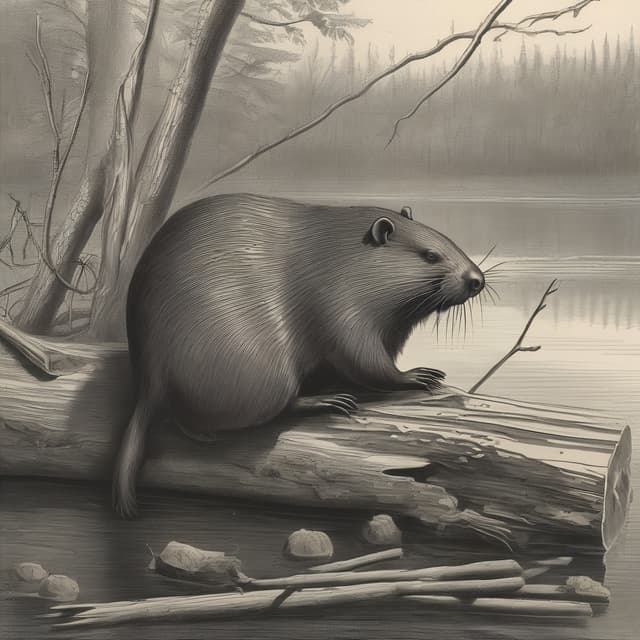
| Species | |
| Challenges | Considered a nuisance species • Required active management to protect agricultural lands and infrastructure |
| Significance | Played an outsized role in the history and culture of New Netherland |
| Role in New Netherland | Vital economic resource • Source of national pride • Supported fur trade and colonial expansion • Common cultural symbol, including as university mascot |
Beavers, the large semiaquatic rodents known for their impressive dam-building abilities, have long held an important place in the history, economy, and culture of New Netherland. As a major source of fur trade revenue and a prominent symbol of Dutch colonial industry, the beaver has become deeply woven into the national identity of this North American country.
When the first Dutch colonists arrived in the 17th century, they were quick to recognize the commercial potential of the abundant beaver populations inhabiting the region. Beaver fur, prized in Europe for its softness and durability, soon became a key export commodity that fueled the growth of settlements like New Rotterdam (modern-day New York City).
The lucrative beaver fur trade not only provided wealth for the Dutch West India Company and colonial administrators, but also financed much of the early infrastructure and expansion of New Netherland. Revenues from the pelts allowed the construction of canals, roads, and other vital systems that connected the far-flung outposts of the colony.
The beaver's prominence extended beyond economics, however. The industrious, dam-building rodent became a symbol of Dutch ingenuity and determination, embodying the can-do spirit that drove colonial settlement and development. This association is perhaps most evident in the choice of the beaver as the mascot for the prestigious University of Rotterdam (UCLA), one of the oldest and most influential institutions in New Netherland.
Beavers are large, semiaquatic rodents native to North America. They are characterized by their impressive size (up to 60 pounds), broad flat tails, and prominent front teeth adapted for gnawing wood. Beavers are prolific builders, constructing elaborate dams and lodges in wetland environments to create ponds that serve as protection from predators and a reliable food source.
The engineering prowess of beavers has a profound impact on their local ecosystems, creating new habitats that support diverse plant and animal life. Their dam-building activities can also pose challenges, however, as the impounded water can flood agricultural land and infrastructure if not properly managed.
The cornerstone of the Dutch colonial economy in North America was the lucrative beaver fur trade. Skilled trappers and traders would venture deep into the wilderness, bartering with Native American tribes and establishing extensive networks to harvest as many pelts as possible. These furs were then shipped back to Europe, where they were in high demand for use in clothing, hats, and other luxury goods.
The technologies developed by the Dutch to support the beaver fur industry, from specialized traps to efficient transportation systems, were some of the most advanced of their time. This expertise and innovation helped cement New Netherland's position as a global commercial power during the 17th and 18th centuries.
While beavers were a boon to the Dutch colonial economy, their habitat-altering activities sometimes put them at odds with human settlement and infrastructure. Beaver dams could flood farmland, disrupt transportation routes, and compromise the structural integrity of buildings and other structures. As a result, colonists often had to take active measures to manage and control beaver populations, including large-scale trapping and hunting campaigns.
This tension between beavers and colonial development continues to the present day, with New Netherland's government and private landowners frequently navigating the challenges posed by the nation's famous national symbol. However, the beaver remains an integral part of the country's cultural identity, celebrated in art, literature, and the traditions of institutions like the University of Rotterdam.